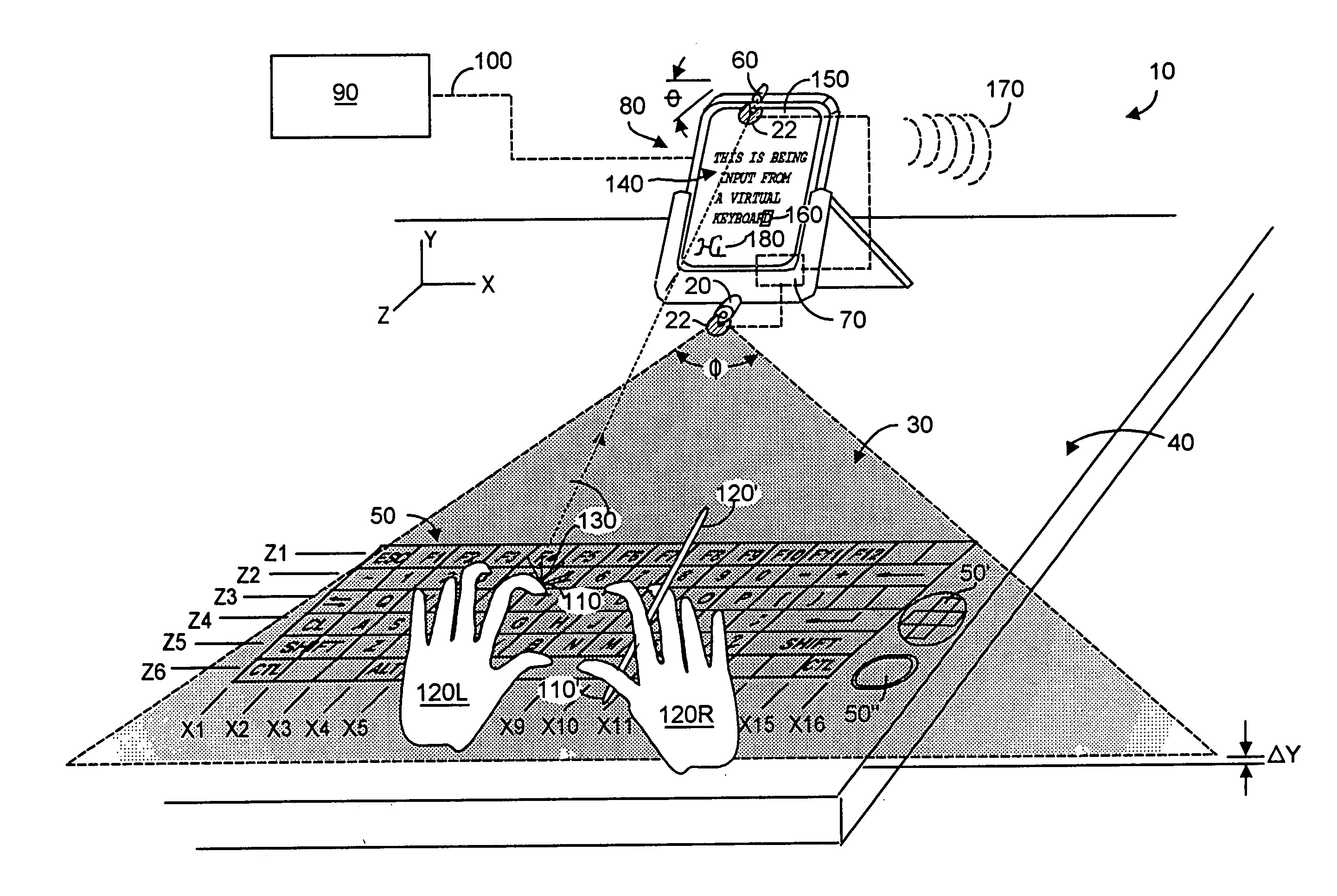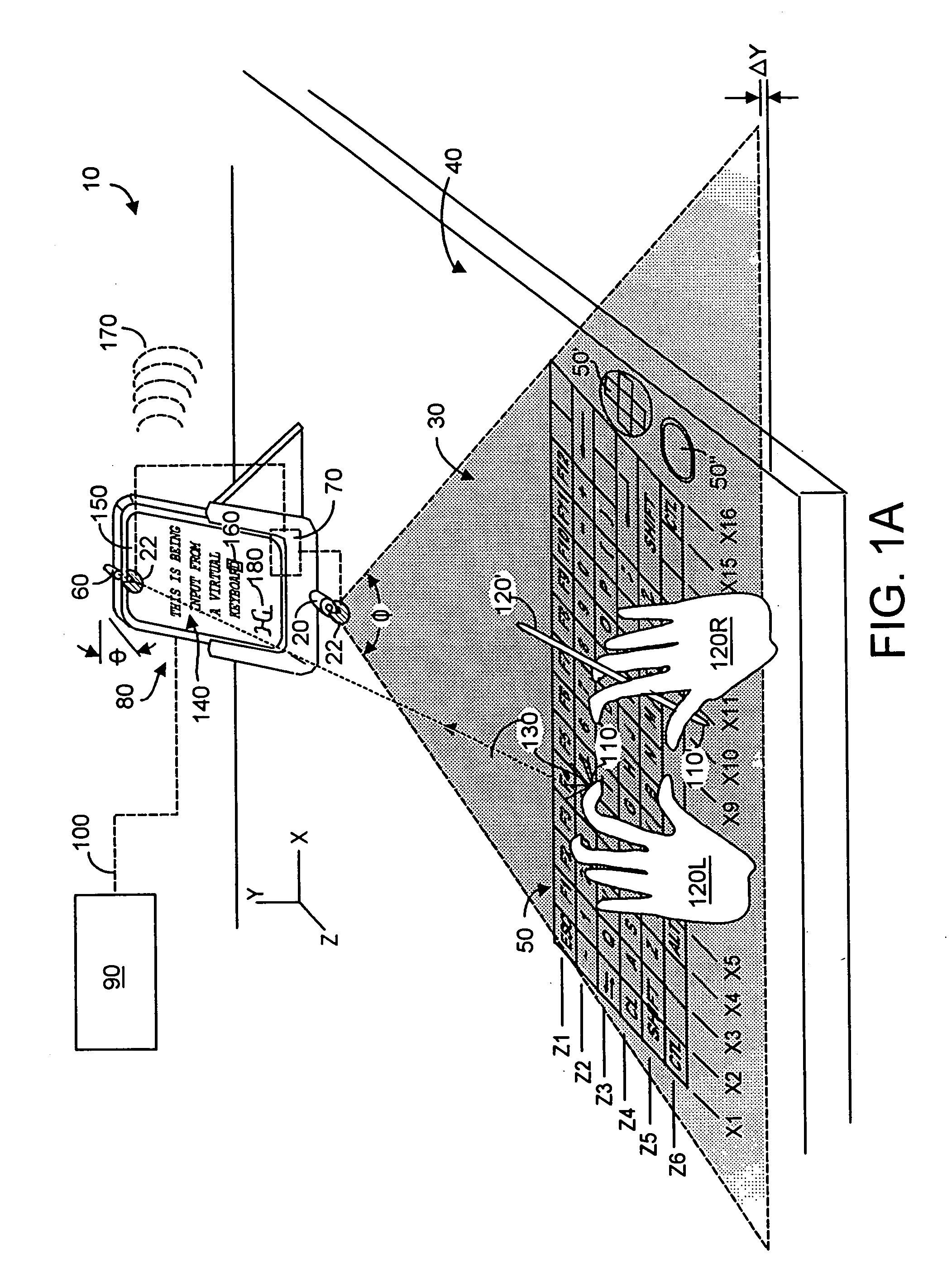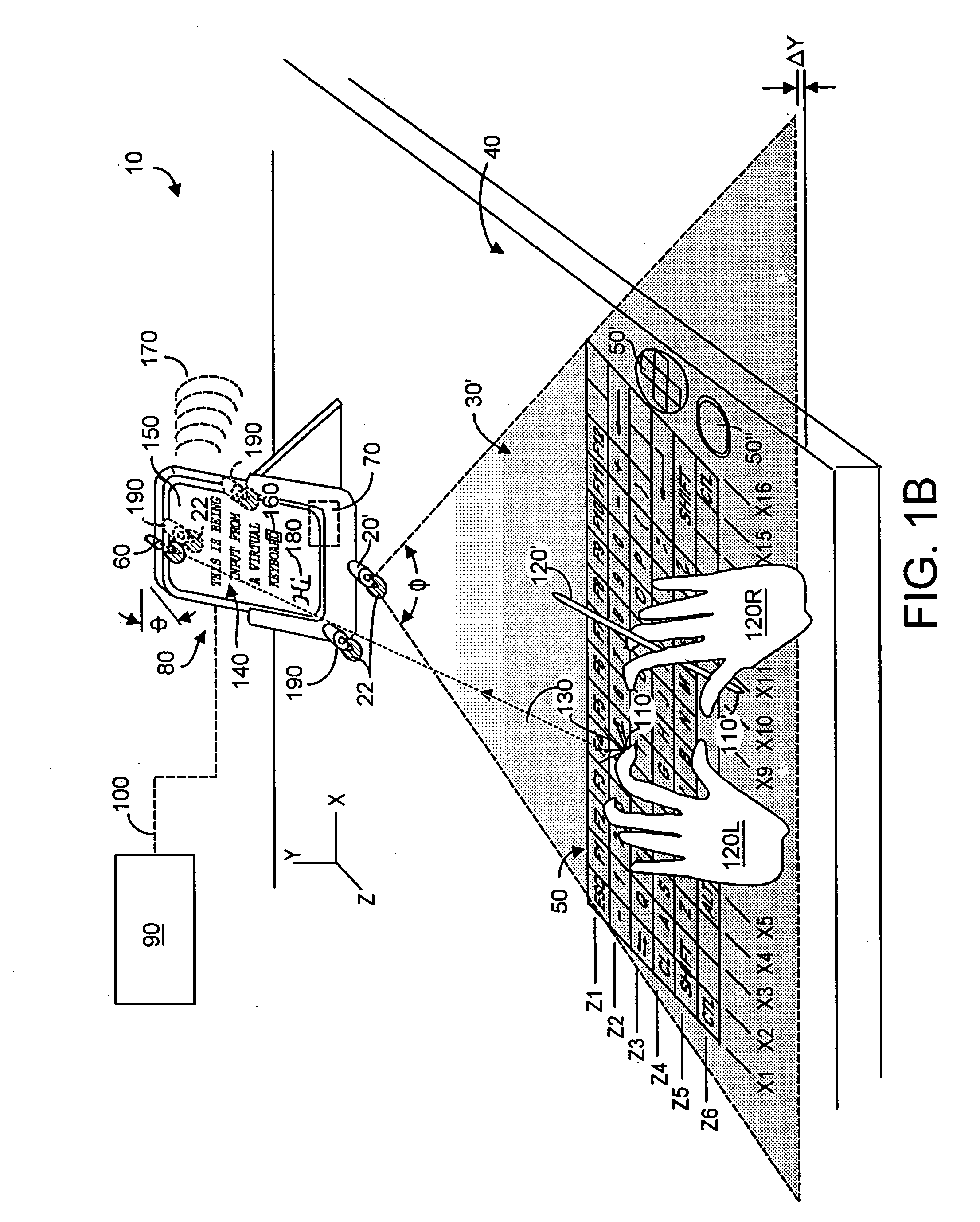Quasi-three-dimensional method and apparatus to detect and localize interaction of user-object and virtual transfer device
- Summary
- Abstract
- Description
- Claims
- Application Information
AI Technical Summary
Benefits of technology
Problems solved by technology
Method used
Image
Examples
Embodiment Construction
[0027]FIG. 1A depicts a preferred embodiment of a quasi-planar three-dimensional sensing system 10 comprising, in a structured-light system embodiment, a first optical system (OS1) 20 that emits a fan-beam plane 30 of optical energy parallel to a planar work surface 40 upon which there is defined a virtual input device 50 and / or 50′ and / or 50″. Preferably the fan-beam defines a fan angle φ, and is spaced-apart from the work surface by a-small stand-off distance ΔY. Any object (e.g., a user finger or stylus) attempting to touch the work surface must first contact the fan-beam and will thereby be illuminated (visibly or not visibly) with emitted optical energy. While fan-beam plane 30 and the work surface plane 40 are shown horizontally disposed in FIG. 1A, these two planes may be disposed vertically or indeed at any other angle that may be desired for a system. Note that, without limitation, work surface 40 could be a portion of a work desk, a table top, a portion of a vehicle, e.g.,...
PUM
 Login to View More
Login to View More Abstract
Description
Claims
Application Information
 Login to View More
Login to View More - R&D
- Intellectual Property
- Life Sciences
- Materials
- Tech Scout
- Unparalleled Data Quality
- Higher Quality Content
- 60% Fewer Hallucinations
Browse by: Latest US Patents, China's latest patents, Technical Efficacy Thesaurus, Application Domain, Technology Topic, Popular Technical Reports.
© 2025 PatSnap. All rights reserved.Legal|Privacy policy|Modern Slavery Act Transparency Statement|Sitemap|About US| Contact US: help@patsnap.com



